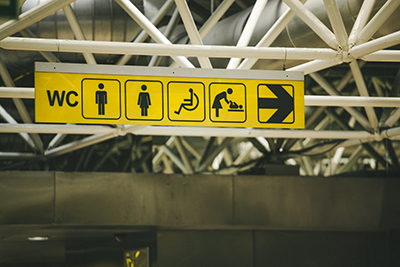Pelvic Floor Muscle Function and Exercises For Women’s Incontinence

What Are The Pelvic Floor Muscles?
The pelvic floor muscles help with the control of the bowel and the bladder. They support all of the pelvic organs and work together with the core muscles of the body to support the spine and trunk. These muscles also help with sexual function. The dysfunction of the pelvic floor can lead to poor control of the bowel and the bladder and sexual dysfunction.
Pelvic floor dysfunction can be a problem if you suffer from the following :
- Urinary incontinence which could be stress incontinence, urge incontinence or a mixture of both
- Nocturia or going to the toilet more than 3 times during the night
- Bowel dysfunction which could be faecal (poo) incontinence, inability to control wind or Obstructed defaecation where there is difficulty eliminating faeces.
Why Do I Need A Pelvic Floor Physiotherapist?
It is important to be able to feel how the pelvic floor contracts so that you can activate it when you need to in circumstances such as lifting heavy objects, jumping at the gym or pushing something heavy. It’s sometimes easier to learn how to contract the pelvic floor with your lower back in the neutral position, which is when there is still a slight inward curve in the lower back but your stomach is not sticking out.
You may find it easier to contract if you think about holding onto your wee or trying not to pass wind. You might like to think of pulling your belly button in towards your spine which can help to activate the pelvic floor as well as the core muscles in the abdomen. Find one for you that works. You may need help from your physiotherapist to ensure that you are turning on the correct muscles and that you are not over activating the pelvic floor muscles and other core stabilisers.
A technique called The Knack can be used to pull up through the pelvic floor. You can try this and jump at the same time. If you feel your pelvic floor let go then you should avoid any high impact activities until you have returned the strength to your pelvic floor muscles
Pelvic Pain Syndromes
Pelvic pain syndromes can mean a lot of different things. Sometimes the pelvic floor muscles can be overactive, underactive or there may be difficulty in coordinating the correct muscles within the pelvic floor. The superficial muscles of the pelvic floor control the opening of the sphincters and the deeper muscles control the holding of the urine and faeces. The main cause of pelvic pain syndromes is from vaginal births and aging but pain can also be a problem in women with endometriosis, PCOS (Polycystic Ovarian Syndrome) or women who have had multiple abdominal surgeries.
Those who have had multiple abdominal or pelvic surgeries often develop scar tissue within the abdomen and pelvic space which can then have an effect on the way the muscles work and this can lead to dysfunction. A scar treatment might be required.
During childbirth the perineum which includes the pelvic floor muscles as well as all of the tissues around the urethra, vagina and anus can be damaged. There can be grade one tears which are usually just skin tears. These are usually just left to heal on their own. Grade 2 tears can then involve some of the pelvic floor muscles in the wall of the vagina. A grade 3 tear will be a bigger tear and can reach the wall of the anus but not damage it and a Grade 4 tear involves major damage to the tissues of the vaginal wall and rectal wall.
There can also be damage to the nerve that supplies the pelvic floor. The nerve can either be compressed or stretched leading to loss of control of the muscle as well as the loss of feeling of what is going on in the area.
This damage can lead to pelvic pain and pelvic floor dysfunction.
Other complications can be from higher maternal age, forceps delivery, prolonged second stage of labour, episiotomy. These can lead to loss of support for the uterus, bladder, colon, and rectum which can then lead to prolapse of one or more of these organs into the vagina.
These different types of prolapse can be described as cystocele or bladder prolapse, rectocele or back passage prolapse and uterine prolapse.
Feelings of something coming down into the vagina, pressure or dragging sensation in the vagina, bulge in the vagina , difficulty emptying bladder or bowel, needing to push up against the perineum or posterior vaginal wall to empty the bowel are all red flags and indicate that you should see your GP, gynecologist or women’s health or pregnancy physiotherapist.
Risk factors include the type of delivery, infant birth, age at first delivery, obesity, aging, and constipation.
Who Is Most Likely To Have A Weak Pelvic Floor?
Persons at risk of developing pelvic floor dysfunction include pregnant women, pelvic pain, recurrent urinary tract infection, female athletes, obesity, connective tissue laxity, chronic cough, low back pain, age-related issues, neurological issues such as Parkinson’s disease and Ms, certain medications, bowel conditions, and post-surgery patients. Men can also be susceptible to a weak pelvic floor.

Not everyone with pelvic floor dysfunction will require strengthening of the pelvic floor. Those with voiding dysfunction, UTI or overactive pelvic floor will not benefit from strengthening exercises.
Real-Time Ultrasound machines can be used to asses whether the pelvic floor muscles can be activated or not. RTUS can be used as a tool to help teach contraction of the pelvic floor as well as the core stabilisers of the trunk and spine

What’s The Best Pelvic Floor Treatment?
If surgery has been recommended it is important that you see a womens health physiotherapist pre- and post-operatively. It is important to correct the action of the pelvic floor muscles and to ensure that the soft tissue/wound is cared for to ensure correct and full healing of the tissues and to get an optimal return of good bladder and bowel habits. It is important to avoid straining and to have relative rest for the first 6 weeks. Relative rest means that you remain active but do not do any heavy activity. It also means that you make time to rest but not rest all day every day as this can lead to dysfunction.
Your pelvic floor rehabilitation should be a gradual program that is overseen by your physiotherapist.
It is also recommended that you drink 1.5 to 2 litres of water each day, avoid caffeine, alcohol and carbonated drinks. Take the time to fully empty your bladder with no rush or straining and suppress the urge to void just in case. This can also lead to pelvic floor dysfunction.
The role of the physio is to screen these clients who come in to see us. If they are asymptomatic then they should join pregnancy/ postnatal classes/pilates/ classes for balance and over 50s, menopause, osteoporosis, etc.
There is evidence to suggest that conservative therapy such as a supervised program is more beneficial than self-directed exercises for those who have stress, urge or mixed incontinence.
The evidence also supports conservative physiotherapy management for pregnant women with their first baby as well as postnatal women immediately after vaginal delivery of a large baby or forceps delivery.
Pelvic floor exercises can help to prevent prolapses or help to reduce the severity of prolapse. They also have been shown to help improve the quality of life and urinary symptoms in women who are having surgery for prolapse.
Exercises To Strengthen Your Pelvic Floor
Strengthening exercises should be done on a daily basis and need to be done for about 5 months in order to see good progress. These need to be done at least twice daily in combinations of different length holds and strength of contractions. Your physiotherapist can design the right program for you which needs to be able to be progressed. Once full strength has been returned a maintenance program should be maintained.

Exercises that are safe to do when you have some pelvic floor dysfunction are walking, seated cycling, swimming, cross-training with low resistance and walking in the water. Some resistance exercises can be done with light weights while seated such as triceps, biceps, wall push-ups or floor bridge.
Exercises that should be avoided include high impact cardio, running, jumping, and skipping. Avoid sit-ups, medicine ball drills, deep lunges and squats, wide squats, leg press machines, lat pulldowns, lifting heavy weights, deadlifts, high bench step-ups, exercises with both feet off the floor, full push-ups and any exercise that places downward pressure onto the pelvic floor.
Contact The Team At Graceville Physio For A Pelvic Floor Assessment
If you think that you may have an issue with the function of your pelvic floor. Make sure you come and see one of our physiotherapists who works in this area. You’ll never know how much better your life may be.


